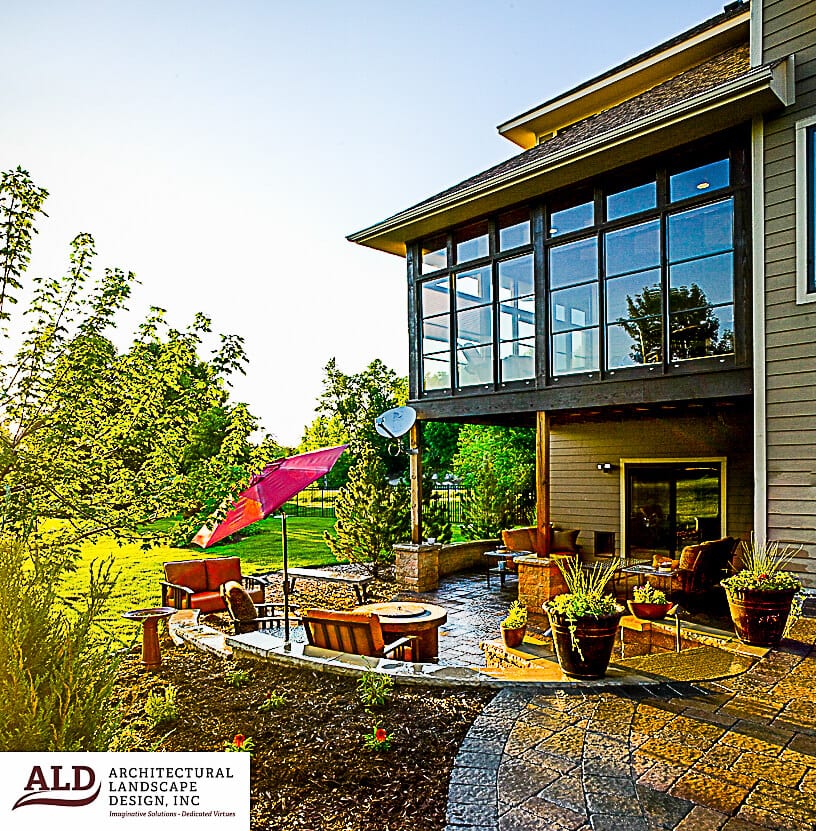Creating an outdoor space that’s aesthetically pleasing demands carefully crafted plans. Hardscapes aren’t assembled overnight. They require an abundance of research and the proper materials to complete the job.
Avoiding mistakes is imperative. Following these simple guidelines is an easy way to ensure your hardscape project turns out how you envision the setup.
Planning The Landscaping
Analyze the area and consider the amount you’re planning on covering. Planning a design can be done on your own volition or you can consult a professional.
A comprehensive notion needs to be implemented. Taking the total area into account is extremely important. This consideration guarantees an organized plan of action that will create an optimal hardscape.
Set The Style Immediately
Think of a short statement that represents what you want the hardscape to depict. Make sure the materials complement your home’s interior and exterior.
Simplicity is a key element towards creating an appeasing hardscape. Having a variety (two types of textures) is a method to coordinate a well-balanced visual. Using multiple textures will cause the hardscape to look messy and unkempt.
Buy Copious Amounts Of Material
Purchasing more material than what is needed will facilitate the construction in a quicker manner.
This way you can fill in the empty spaces to accent petty beds with temporary edgings. Adding steppingstones or landings is another option as well.
Spare no expense on gathering materials for your hardscape project. Don’t be frugal when it comes to spending. The most cost-effective strategy is to buy quality material that will last through the wear and tear the elements bring.
Of course you want to economize, and make conscious decisions when purchasing materials.
Consulting a professional who is knowledgeable in what materials will sustain long after the hardscape is constructed is vital. Find a professional who has a keen eye for picking out material that will match the architecture splendidly.
Prepare The Site Correctly
Putting down hardscape element without adequately preparing the site is a recipe for disaster.
Wasted time and money only results in anger and frustration.
Being mindful of your preparation and responsibilities can easily negate these predicaments.
Putting the correct amount of base material down is an indispensable step towards preparing a successful site. Compacting it well enough will prevent the risk of having a wall sink or patio settle and heave in frost.
What you can’t see holds a lot of value. Spending an excess of money for a level surface and proper depth for a freeze line is necessary for a proper hardscape.
Choosing The Correct Material’s For The Job
Brick is one of the most common materials chosen for buildings, roads, pathways, walls, and various structures.
The total area can be measured smoothly when using bricks because they possess even dimensions.
Bricks have a specific pattern that stands out to the naked eye. They have been around for centuries and have an appeal that’s unmatched.
Used brick is a very popular choice for the environmental aspects and typically used for numerous outdoor projects.
Bricks are the first material that comes to mind when taking on a hardscape project.
Composite decking isn’t made out of real wood or aluminum.
Composite decking is a more eco-friendly decision that’s designed to last. The majority of most brands is made from wood fibers and recycled plastics.
The material won’t splinter, is insect repellent, doesn’t experience molding or rotting, has excellent traction, and doesn’t require sanding or resealing.
Sounds like material that fits the phrase: “heaven on earth”.
Composite decking is quite costly and doesn’t bode well with someone who has a budget to follow.
Concrete is often used to create a driveway. It can also be used for a concrete patio or pathway project.
Concrete can be stained, stamped, texturized and embedded easily with other materials when necessary.
Lose materials such as pea gravel, Mexican river rock, small stones, gravel, recycled rubber much and recycled glass are what give a pathway, driveway, or other structures a nice visual representation.
Pavers are commonly placed over pea gravel and can be a project that is on a DIY scale. They are usually installed over pea gravel and bedding sand.
Pavers are created from a wide range of materials. The most popular are concrete, brick, and flagstone.
Pavers can also be placed on diatomaceous earth (dirt or grass).
Stone is used for outdoor patios, courtyards and other areas for a hardscape project.
Ceramic tile is also used for outdoor patios and courtyards. It should be set in bed of motor on top of a concrete slab.
Outdoor tile is used for various climates, so choose according to your climate.
Wood is a material used for outdoor decks and has a long track record of requiring a lot of maintenance.
Whether you’re choosing bricks, composite decking, stone, wood, or outdoor ceramic tiles, you must know what type of hardscape you’re planning to construct.
The key to building a successful hardscape depends upon proper planning, defining the style, preparing the site, buying enough material, using the correct variety and material to complete the job effectively and efficiently.

